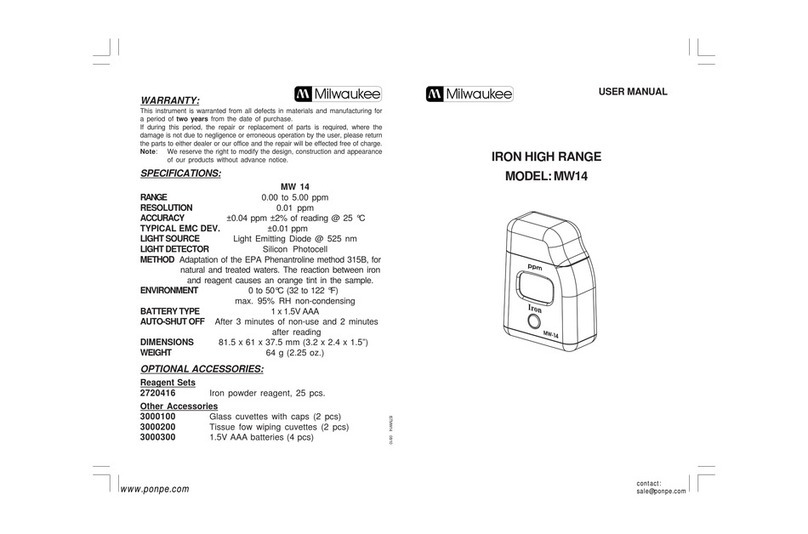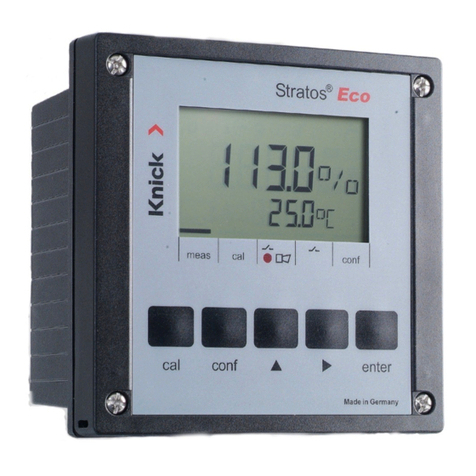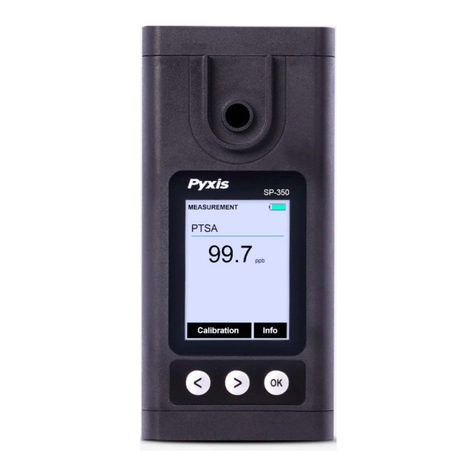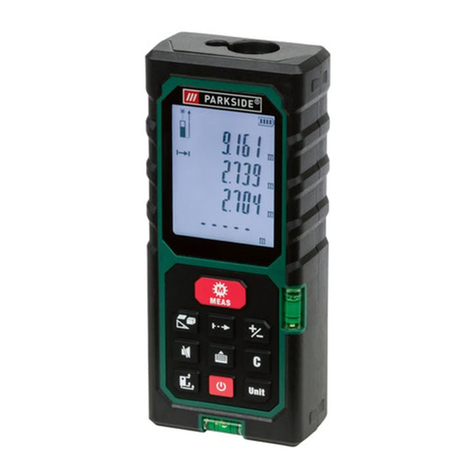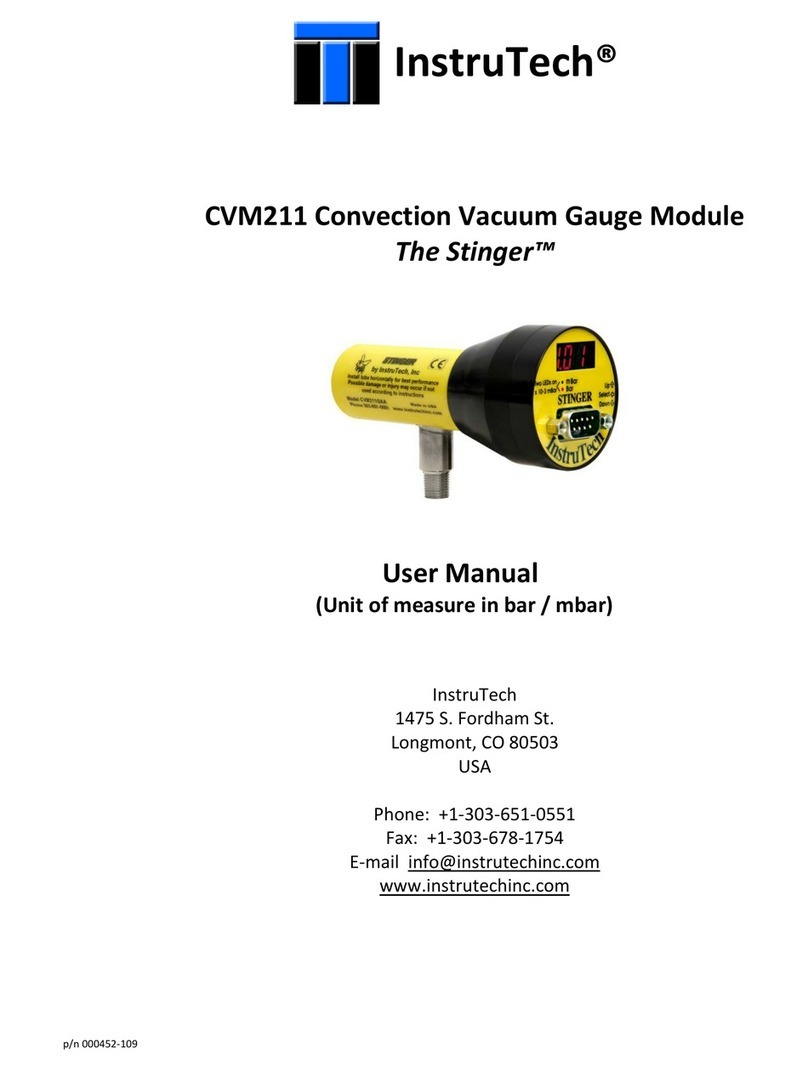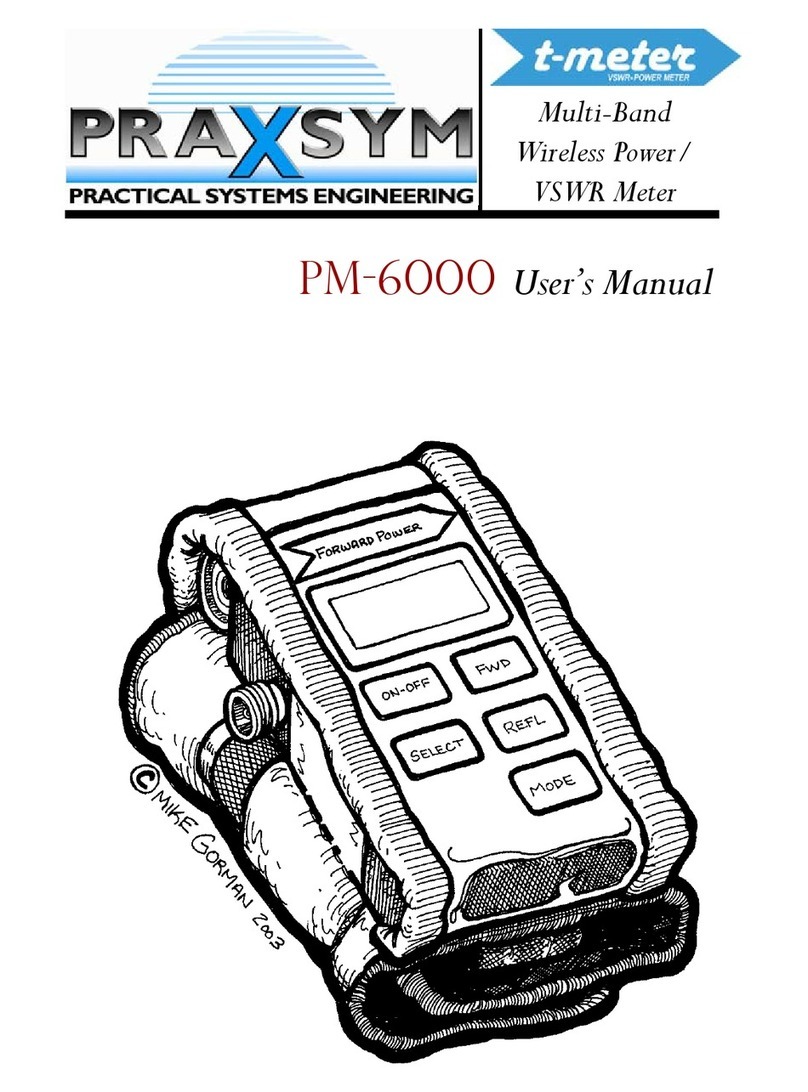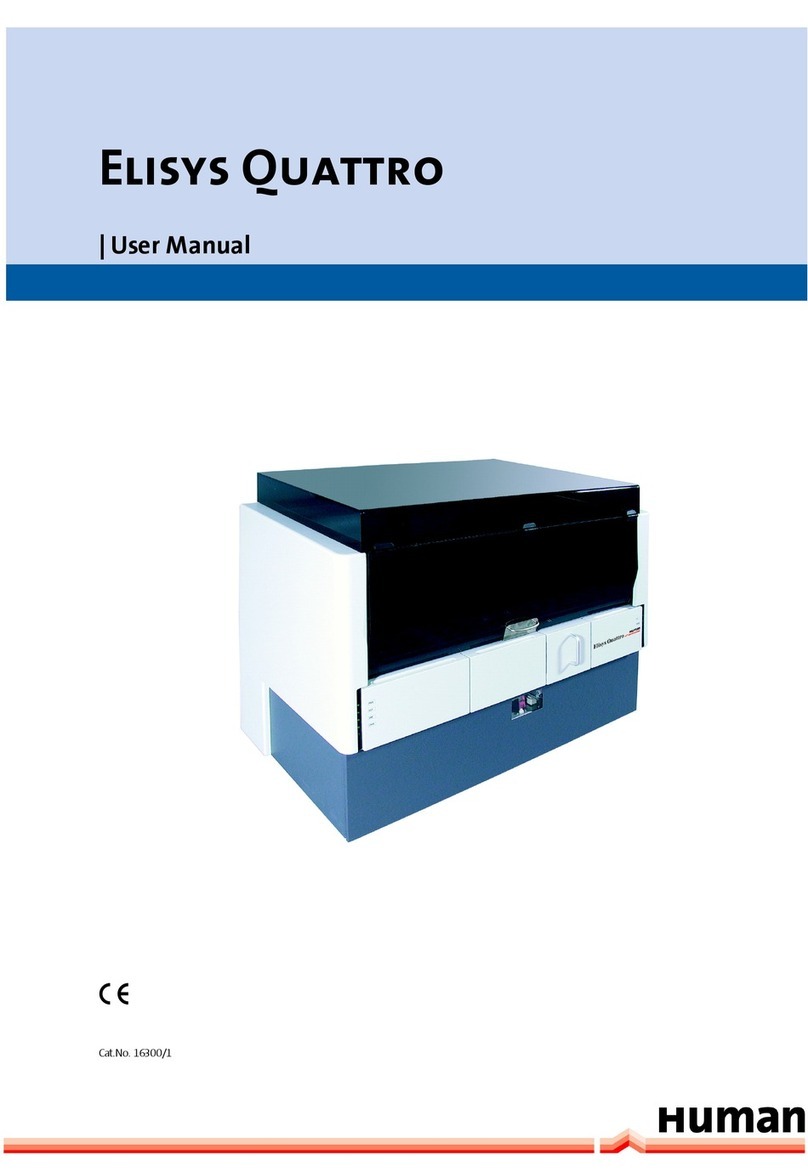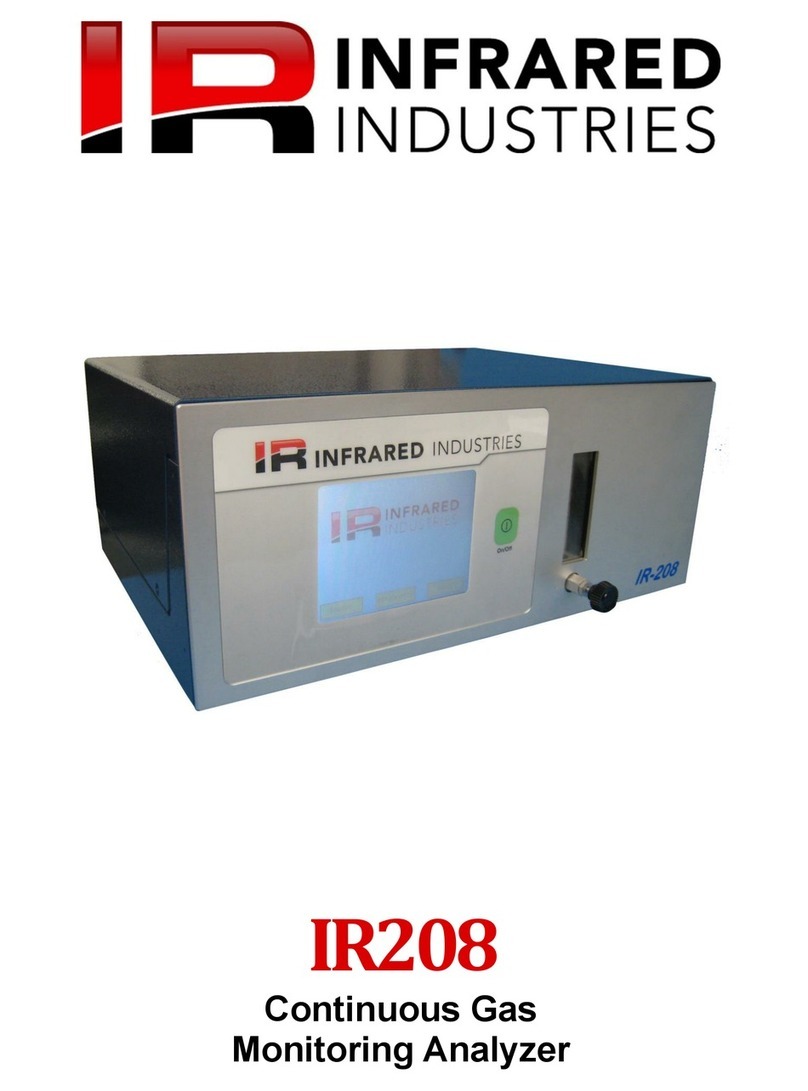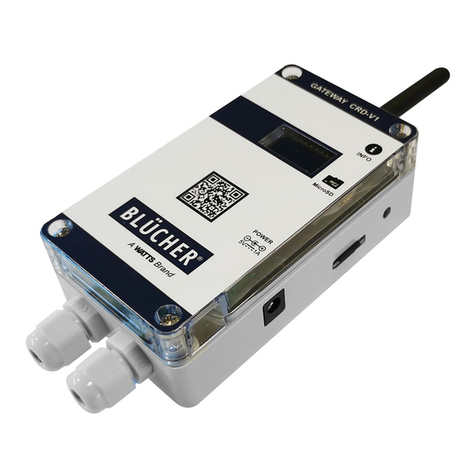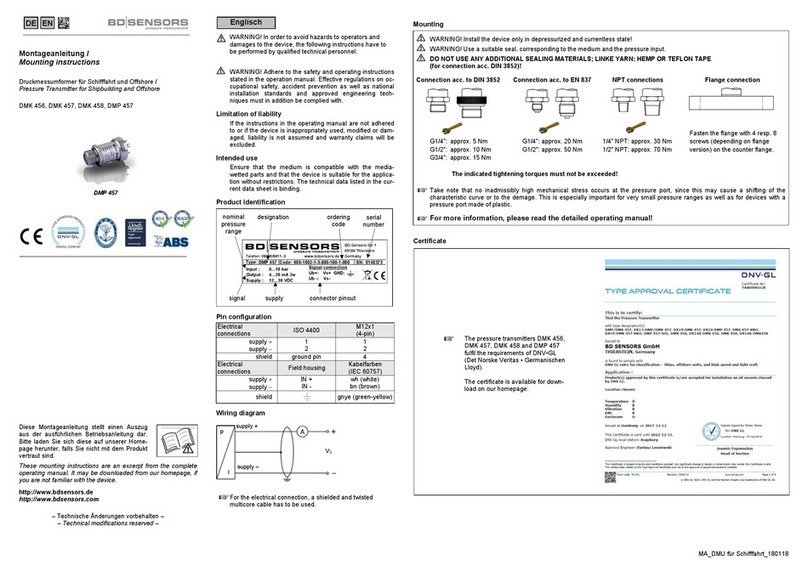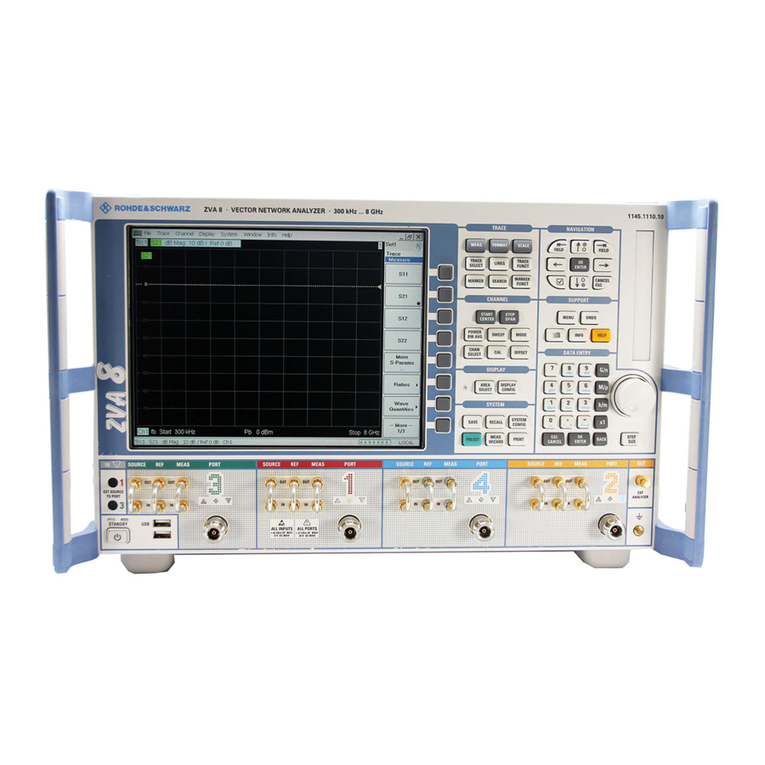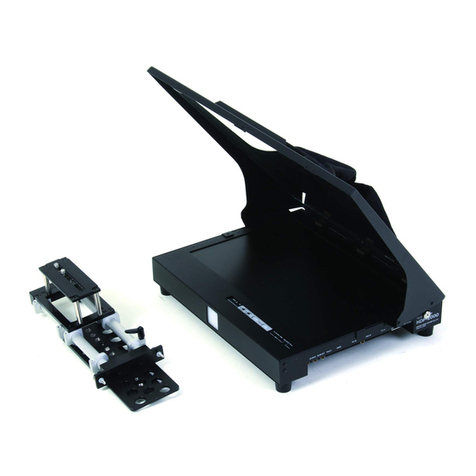WATERS CORPORATION TA Instruments DSC 2010 User manual

iTA I
NSTRUMENTS
DSC 2010
DSC 2010
Differential Scanning Calorimeter
Operator’s Manual
PN 925604.001 Rev. E (Text and Binder)
PN 925604.002 Rev. E (Text Only)
Issued May 1998
TA
Instruments 109 Lukens Drive New Castle, DE 19720
Thermal Analysis & Rheology
A S
UBSIDIARY
OF
W
ATERS
C
ORPORATION

ii TA I
NSTRUMENTS
DSC 2010
©1995, 1996, 1997, 1998 by TA Instruments
109 Lukens Drive
New Castle, DE 19720
Notice
The material contained in this manual is be-
lieved adequate for the intended use of this
instrument. If the instrument or procedures are
used for purposes other than those specified
herein, confirmation of their suitability must be
obtained from TA Instruments. Otherwise, TA
Instruments does not guarantee any results and
assumes no obligation or liability. This publica-
tion is not a license to operate under or a
recommendation to infringe upon any process
patents.
TA Instruments Operating Software and Instru-
ment, Data Analysis, and Utility Software and
their associated manuals are proprietary and
copyrighted by TA Instruments, Inc. Purchasers
are granted a license to use these software
programs on the instrument and controller with
which they were purchased. These programs
may not be duplicated by the purchaser without
the prior written consent of TA Instruments.
Each licensed program shall remain the exclu-
sive property of TA Instruments, and no rights
or licenses are granted to the purchaser other
than as specified above.

iiiTA I
NSTRUMENTS
DSC 2010
Table of Contents
Notes, Cautions, and Warnings ................. ix
Safety............................................................. x
Using This Manual......................................xv
CHAPTER 1: Introducing
the DSC 2010 .............................................1-1
Introduction.................................................1-3
Components............................................. 1-5
The 2010 Instrument...................................1-6
2010 Instrument Keypad .........................1-7
POWER Switch ................................ 1-9
2010 DSC Cell.........................................1-9
Accessories ...............................................1-10
Sample Encapsulating Press............... 1-10
Accessories for
Subambient Operation........................ 1-11
LNCA.............................................. 1-11
RCS ................................................. 1-12
DSC Cooling Can ........................... 1-13
Specifications............................................ 1-14

iv TA I
NSTRUMENTS
DSC 2010
Table of Contents
(continued)
CHAPTER 2: Installing the
DSC 2010 ................................................... 2-1
Unpacking/Repacking the 2010 ................. 2-3
Unpacking the 2010 ................................ 2-3
Unpacking the DSC Cell......................... 2-6
Repacking the 2010................................. 2-6
Installing the 2010 Instrument.................... 2-7
Inspecting the System.............................. 2-7
Choosing a Location ............................... 2-8
Connecting Cables and Gas Lines .......... 2-9
GPIB Cable .......................................... 2-9
Purge, Vacuum,
and Cooling Gas Lines.......................2-12
PURGE Line ................................... 2-12
VACUUM Line .............................. 2-13
COOLING GAS Line .....................2-13
Power Cable ....................................... 2-15
Installations for Subambient Operation ...2-16
Installing the DSC Cooling Can............ 2-17
Starting the 2010.......................................2-20
Shutting Down the 2010........................... 2-21

vTA I
NSTRUMENTS
DSC 2010
Table of Contents
(continued)
CHAPTER 3: Running Experiments...... 3-1
Overview..................................................... 3-3
Before You Begin.................................... 3-3
Calibrating the DSC.................................... 3-4
Baseline Slope and Offset Calibration .... 3-5
Cell Constant Calibration ........................3-6
Temperature Calibration ......................... 3-6
Running a DSC Experiment ....................... 3-7
Experimental Procedure .......................... 3-7
Preparing Samples................................... 3-8
Determining Sample Size.....................3-8
Physical Characteristics ....................... 3-9
Selecting Sample Pans ......................... 3-9
Sample Pan Material......................... 3-9
Sample Pan Configuration .............. 3-11
Nonhermetic Pans........................ 3-11
Hermetic Pans.............................. 3-11
Open Pans .................................... 3-12
SFI Pans....................................... 3-12
Encapsulating the Sample .................. 3-12
Preparing Nonhermetic
Sample Pans .................................... 3-13
Preparing Hermetic
Sample Pans .................................... 3-16
Setting Up Accessories ...................... 3-19
Loading the Sample............................ 3-21

vi TA I
NSTRUMENTS
DSC 2010
Table of Contents
(continued)
Starting an Experiment .......................... 3-23
Stopping an Experiment ........................ 3-23
Subambient Experiments .......................... 3-24
DSC Cooling Can.................................. 3-24
Applications .......................................3-24
Operation............................................ 3-25
Quench-Cooling
Between Runs .................................3-25
Starting a Run Below
Ambient Temperature .....................3-26
Programmed Cooling ...................... 3-26
CHAPTER 4: Technical Reference.........4-1
Description of the DSC 2010...................... 4-3
DSC Cell.................................................. 4-3
Principles of Operation............................... 4-5
Cell Block Heating .................................. 4-5
Sample and Reference Thermocouples ... 4-6
DSC Applications .......................................4-7
Sample Types .......................................... 4-7
Status Codes ............................................... 4-8

viiTA I
NSTRUMENTS
DSC 2010
Table of Contents
(continued)
Guidelines for Quantitative Studies.......... 4-12
Specific Heat Experiments .................... 4-12
CHAPTER 5: Maintenance
and Diagnostics ......................................... 5-1
Overview..................................................... 5-3
Routine Maintenance ..................................5-4
Inspection ................................................5-4
Cleaning the Instrument Keypad .............5-4
Cleaning a Contaminated Cell................. 5-4
Cleaning DSC Pans .................................5-5
Sample Encapsulating Press ....................5-7
Diagnosing Power Problems....................... 5-8
Fuses ........................................................5-8
Power Failures......................................... 5-9
DSC 2010 Test Functions......................... 5-12
2010 Confidence Test............................ 5-12
Replacement Parts .................................... 5-13

viii TA I
NSTRUMENTS
DSC 2010
Table of Contents
(continued)
Appendix A: Sample
Encapsulating Press................................. A-1
Appendix B: Ordering
Information .............................................. B-1
Index........................................................... I-1

ixTA I
NSTRUMENTS
DSC 2010
Notes, Cautions,
and Warnings
This manual uses NOTES, CAUTIONS, and
WARNINGS to emphasize important and
critical instructions.
A NOTE highlights important information about
equipment or procedures.
A CAUTION emphasizes a procedure that may
damage equipment or cause loss of data if not
followed correctly.
A WARNING indicates a procedure that
may be hazardous to the operator or to the
environment if not followed correctly.
NOTE:
tt
tt
t
CAUTION:
!
WARNING

x TA I
NSTRUMENTS
DSC 2010
Safety
This equipment has been designed to comply
with the following standards on safety:
• IEC 1010-1/1990 and A1/1992
• IEC 1010-2-010/1992
• EN 61010-1/1992
• EN 61010-2-010/1994
• UL 3101-1, First Edition.
Electrical Safety
You must unplug the instrument before doing
any maintenance or repair work; voltages
exceeding 110 volts AC are present in this
system.
High voltages are present in this instru-
ment. If you are not trained in electrical
procedures, do not remove the cabinet
covers. Maintenance and repair of internal
parts must be performed only by TA Instru-
ments or other qualified service personnel.
After transport or storage in humid condi-
tions, this equipment could fail to meet all
the safety requirements of the safety
standards indicated. Refer to the NOTE on
page 2-8 for the method used to dry out
the equipment before use.
!
WARNING
!
WARNING

xiTA I
NSTRUMENTS
DSC 2010
Potential Asphyxiant
Liquid nitrogen can cause rapid suffocation without
warning.
Store and use in an area with adequate ventilation.
Do not vent LNCA container in confined spaces.
Do not enter confined spaces where nitrogen gas
may be present unless the area is well ventilated.
The warning above applies to the use of liquid nitrogen. Oxygen
depletion sensors are sometimes utilized where liquid nitrogen is
in use. Please refer to the “Safety” section of the
TA Instru-
ments Liquid Nitrogen Cooling Accessory
manual for more de-
tailed instructions regarding the use of the LNCA.
WARNING

xii TA I
NSTRUMENTS
DSC 2010
Safety
(continued)
Handling Liquid Nitrogen
The DSC 2010 uses the cryogenic (low-tempera-
ture) agent, liquid nitrogen, for cooling. Be-
cause of its low temperature (-195°C), liquid
nitrogen will burn the skin. When you work
with liquid nitrogen, use the following precau-
tions:
Liquid nitrogen evaporates rapidly at room
temperature. Be certain that areas where
liquid nitrogen is used are well ventilated to
prevent displacement of oxygen in the air.
1. Wear goggles or a face shield, gloves large
enough to be removed easily, and a rubber
apron. For extra protection, wear high-
topped, sturdy shoes, and leave your pant
legs outside the tops.
2. Transfer the liquid slowly to prevent thermal
shock. Use containers that have satisfactory
low-temperature properties. Ensure that
closed containers have vents to relieve
pressure.
3. The purity of liquid nitrogen decreases as
the nitrogen evaporates. If much of the
liquid in a container has evaporated, analyze
the remaining liquid before using it for any
purpose where high oxygen content could be
dangerous.
!
WARNING

xiiiTA I
NSTRUMENTS
DSC 2010
!
WARNING
tt
tt
t
CAUTION:
!
WARNING
Safety
(continued)
IF A PERSON IS BURNED BY LIQUID
NITROGEN . . .
1. IMMEDIATELY flood the area (skin or
eyes) with large quantities of cool water,
and then apply cold compresses.
2. If the skin is blistered or if there is a
chance of eye infection, take the person
to a doctor IMMEDIATELY.
Chemical Safety
Do not use hydrogen or any other explosive
gas with the DSC 2010.
Use of chlorine gas will damage the cell.
Some samples may give off hazardous
gases when heated. Make sure that the
DSC 2010 is well ventilated. Use a labo-
ratory hood or exhaust hose to ventilate
gases.
Thermal Safety
After running an experiment, you must allow the
DSC Cell to cool down before you touch the
internal cell surfaces. These surfaces can be hot
enough to burn the skin during a sample run.

xiv TA I
NSTRUMENTS
DSC 2010
!
Safety
(continued)
Lifting the Instrument
The DSC 2010 is a fairly heavy instrument. In
order to avoid injury, particularly to the back,
please follow this advice:
Use two people to lift and/or carry the
instrument. The instrument is too heavy
for one person to handle safely.
!
WARNING

xvTA I
NSTRUMENTS
DSC 2010
Using This Manual
Chapter 1 Describes the 2010
instrument and its
specifications.
Chapter 2 Describes how to connect
the 2010 instrument to the
rest of your system.
Chapter 3 Describes how to run
DSC experiments.
Chapter 4 Provides technical
information and explains
the DSC principles of
operation.
Chapter 5 Describes instrument
maintenance procedures
and lists replacement
parts.
Appendix A Explains how to change
the Sample Encapsulating
Press dies.
Appendix B Lists worldwide TA
Instruments
offices that you can
contact to place
orders, receive technical
assistance, and request
service.
Index Lists the page numbers of
importanttopics for your
reference.

xvi TA I
NSTRUMENTS
DSC 2010

TA I
NSTRUMENTS
DSC 2010 1–1
CHAPTER 1: Introducing the
DSC 2010
Introduction.................................................1-3
Components............................................. 1-5
The 2010 Instrument...................................1-6
2010 Instrument Keypad .........................1-7
POWER Switch ................................ 1-9
2010 DSC Cell.........................................1-9
Accessories ...............................................1-10
Sample Encapsulating Press............... 1-10
Accessories for
Subambient Operation........................ 1-11
LNCA.............................................. 1-11
RCS ................................................. 1-12
DSC Cooling Can ........................... 1-13
Specifications............................................ 1-14

Introducing the DSC 2010
1–2 TA I
NSTRUMENTS
DSC 2010

TA I
NSTRUMENTS
DSC 2010 1–3
Introduction
Introduction
The Differential Scanning Calorimeter (DSC)
2010 (Figure 1.1) determines the temperature
and heat flow associated with material transi-
tions as a function of time and temperature. It
also provides quantitative and qualitative data
on endothermic (heat absorption) and exother-
mic (heat evolution) processes of materials
during physical transitions that are caused by
phase changes, melting, oxidation, and other
heat-related changes. This information helps
the scientist or engineer identify processing and
end-use performance.
The DSC 2010 instrument works in conjunction
with a controller and associated software to
make up a thermal analysis system.
Your controller is a computer that performs the
following functions:
• Provides an interface between you and the
analysis instrument
• Enables you to set up experiments and enter
constants
• Stores experimental data
• Runs data analysis programs.

Introducing the DSC 2010
1–4 TA I
NSTRUMENTS
DSC 2010
Figure 1.1
DSC 2010 with
TA Instruments
Thermal Analyzer
Table of contents


